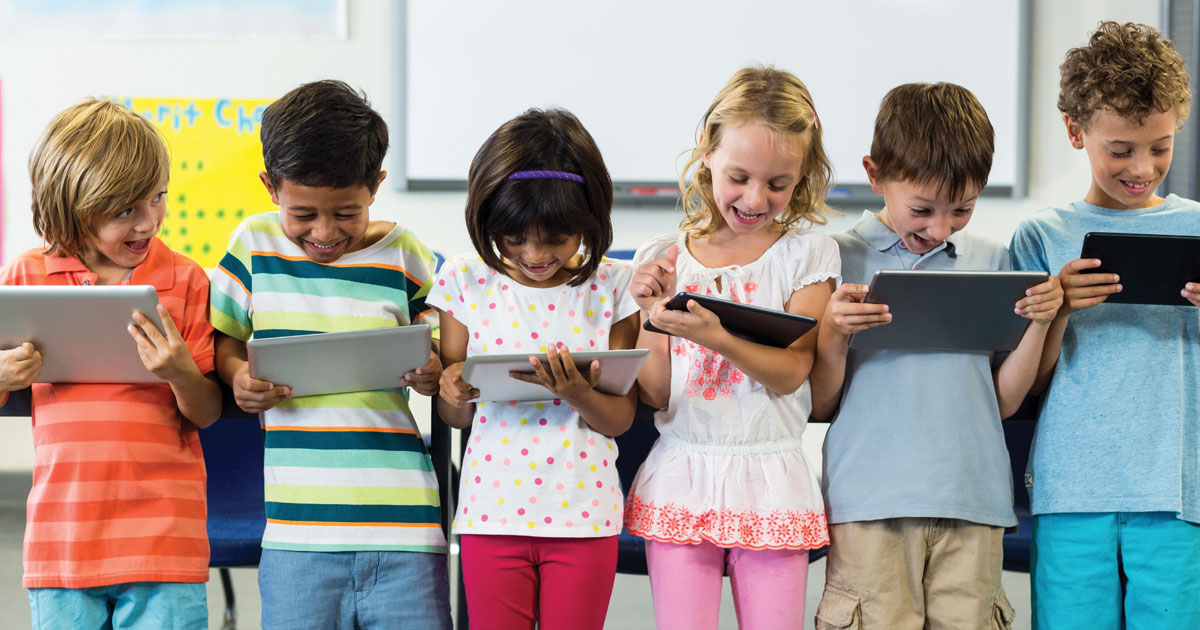Not that long ago, slate boards, highlighters, and classroom libraries were tools promoting educational progress, while lessons in phonics, cursive, and spelling comprised the foundation for an effective language program. Over the decades, new teaching methods, which experimented in pedagogy, instituted programs that fostered various levels of progress, but endured setbacks. Educational professionals wondered, “Couldn’t we balance the old proven standards while implementing new ideas?”
One debate continues between policymakers and educators, parents and students: how far should technology impact teaching styles, curriculum, and students? With the arrival of Common Core, one mandate prompted students to become technologically skilled. Each student received a laptop, which encouraged self-pace personalized lessons. Preparing young adults for the 21st-century workplace, technology in schools offers both sides of the coin, positives as well as drawbacks.
Digital “Natives”
Growing up in a digital world defined how students learned, maintained friendships, and spent their leisure time. Every heart’s desire, from filling a glass of water, turning on the oven, washing and drying clothes, driving, and finding the shortest means of traveling between two destinations required one action—applying one finger to a touch-screen or swiping it in a certain direction. The answer connected students with the tools necessary to survive in the future.
Surprisingly, teachers, who used technology on a minimal basis within their classrooms, discovered the students were both engaged and productive. Hands-on activities, labs, small groups, and creative projects fostered a positive impact on the growth and development of the students. Furthermore, classmates engaged in conversations by bandying about ideas, practicing critical thinking and deductive reasoning skills while broadening friendships. Students who balanced technology with interaction experienced positive feelings about attending school.
The Smartboard Promotes Differing Learning Styles
Visitors to public and private schools will find today’s classrooms brimming with technology. The interactive Smartboard replaces the overhead projector and the chalkboard. The multi-functional whiteboard includes a touchscreen option for students to view diagrams, charts, pictures, and videos. By enhancing a student’s learning experiences, the Smartboard helps all types of learning styles. No longer are learners focusing on one format of a lesson, taking notes; instead, the large screen offers students the opportunity to experience learning through sensory options.
The Nature of Playing has Changed
Keyboarding practice and lessons help children to prepare for a technological future; yet, abandoning paper and a writing tool comes with repercussions. The overuse of touchscreen applications prevents the finger muscles from developing sufficiently, impacting hand strength and the dexterity needed to hold a pencil or pen correctly. Children need a firm control of the fine muscles at the fingers to control, grip, and move a writing utensil. While children can easily maneuver through screens of an iPad at a tender age, they also require muscle-building opportunities with building blocks and Legos, as well as interacting with toys that swing and force a child to engage in climbing. Returning to traditional forms of playing while utilizing art supplies and pencils will keep preschool children, especially, from experiencing delays in using a utensil and help them learn to write without associating pain and cramping with the act of writing.
What is Blended Learning?
Technology is a powerful tool for tailoring education to each student’s academic strengths and weaknesses, interests, and optimal pace for learning. Through digital devices and software, students strive toward completing set goals. Blended learning combines traditional teacher-to-student lessons, both small-group and class instruction, with technology. Students receive blocks of time which rotate between online activities and in-person stations. The goal of the “flex” schedule still enables children to receive individualized instruction while offering opportunities for student interactions, group work, and problem-solving.
Flexibility and Balance
Technology is a tool that will only expand farther in our daily lives. While there are many positive aspects to a technological educational platform, parents can better control their child’s sedentary activities by suggesting an alternative to screen-time. It is challenging to enforce powering down or silencing cellular devices for a digital “native”; however, balance is a necessity.























